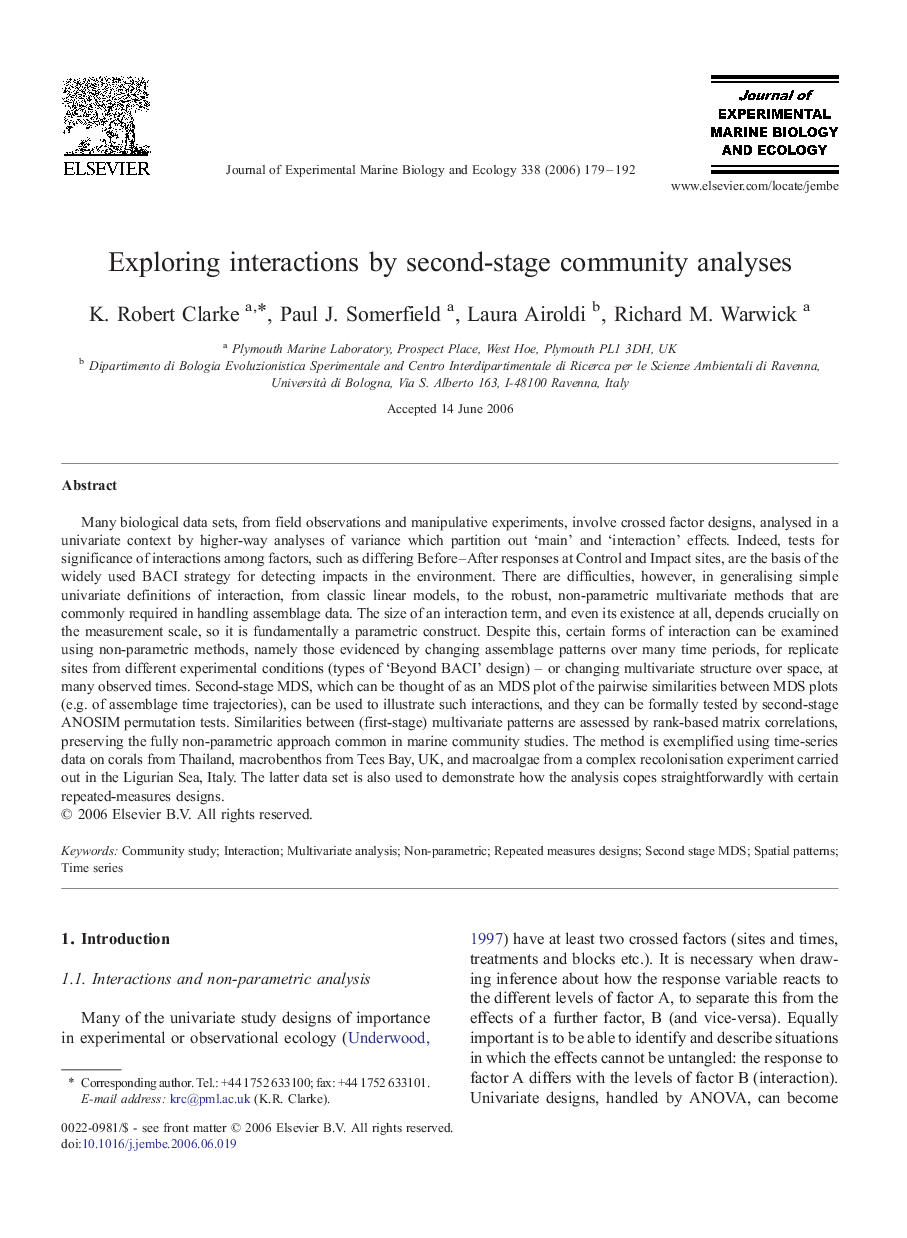| کد مقاله | کد نشریه | سال انتشار | مقاله انگلیسی | نسخه تمام متن |
|---|---|---|---|---|
| 4397985 | 1305918 | 2006 | 14 صفحه PDF | دانلود رایگان |

Many biological data sets, from field observations and manipulative experiments, involve crossed factor designs, analysed in a univariate context by higher-way analyses of variance which partition out ‘main’ and ‘interaction’ effects. Indeed, tests for significance of interactions among factors, such as differing Before–After responses at Control and Impact sites, are the basis of the widely used BACI strategy for detecting impacts in the environment. There are difficulties, however, in generalising simple univariate definitions of interaction, from classic linear models, to the robust, non-parametric multivariate methods that are commonly required in handling assemblage data. The size of an interaction term, and even its existence at all, depends crucially on the measurement scale, so it is fundamentally a parametric construct. Despite this, certain forms of interaction can be examined using non-parametric methods, namely those evidenced by changing assemblage patterns over many time periods, for replicate sites from different experimental conditions (types of ‘Beyond BACI’ design) – or changing multivariate structure over space, at many observed times. Second-stage MDS, which can be thought of as an MDS plot of the pairwise similarities between MDS plots (e.g. of assemblage time trajectories), can be used to illustrate such interactions, and they can be formally tested by second-stage ANOSIM permutation tests. Similarities between (first-stage) multivariate patterns are assessed by rank-based matrix correlations, preserving the fully non-parametric approach common in marine community studies. The method is exemplified using time-series data on corals from Thailand, macrobenthos from Tees Bay, UK, and macroalgae from a complex recolonisation experiment carried out in the Ligurian Sea, Italy. The latter data set is also used to demonstrate how the analysis copes straightforwardly with certain repeated-measures designs.
Journal: Journal of Experimental Marine Biology and Ecology - Volume 338, Issue 2, 14 November 2006, Pages 179–192